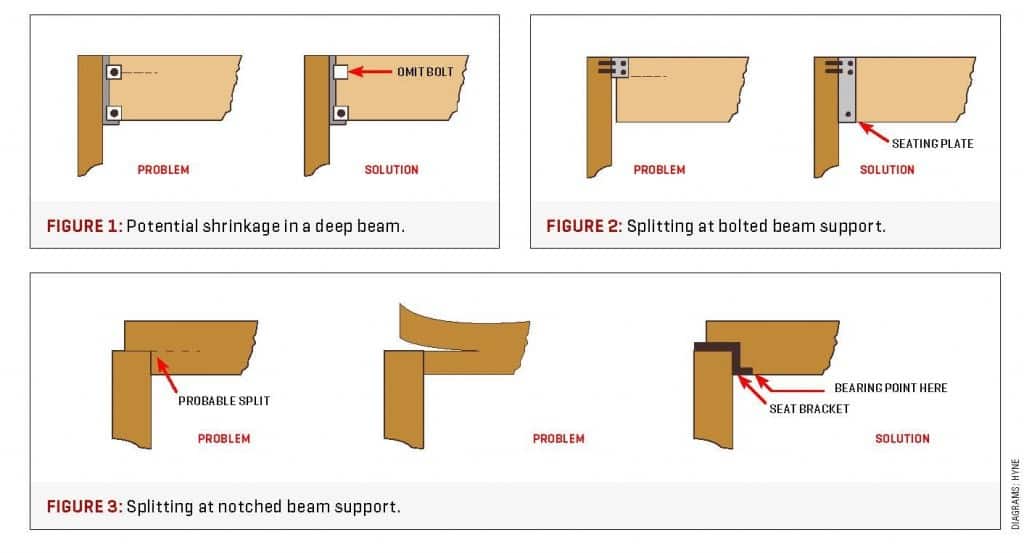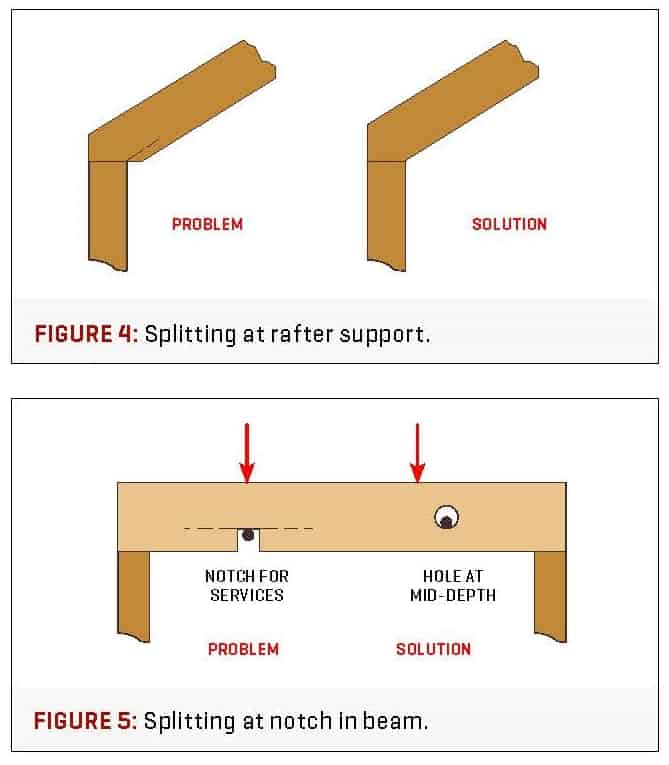Correct installation is key
Glulam is a popular material choice in building construction, but incorrect installation onsite is still an ongoing issue. Below is an outline of some of the most common problems.
In all probability the first engineered wood products in building construction were glued laminated timber beams, also known as Glulam, used in Europe in the mid-1800s. They have developed over the past 150 years as highly dependable structural beams; however, during the early stages of Glulam in Australia, some poor quality product and installation practices threatened the potential success of the technology.
To overcome these issues the Glued Laminated Timber Association of Australia (GLTAA) was formed in 1989 to set industry standards and implement a code of practice and policy which is still firmly in place today.
A complete quality system is adopted by producers and importer members involving third-party auditing and certification. The GLTAA quality mark ensures designers and builders can rely on the Glulam product to perform to specification.

Even though Glulam beams with high credentials for product quality and reliable performance have been used in buildings throughout the world over all these years, there are still regular reports of issues arising from incorrect installation onsite that can severely affect the beam’s performance.
According to Hyne Laminated Timber Projects business development manager Robert Mansell, the most common onsite issues are caused by notching of the beam bottom edge, incorrect end supports causing splitting, cutting holes for services, and incorrect design and installation relating to durability and service life.
“One of the most serious issues is the reduction in Glulam performance from notching of the beam bottom edge, which is in tension and supporting a large part of the beam load,” Robert explains.
“We have seen many examples of this when items such as bracing tie down, fixings and services are not properly accommodated within the building design and construction, and the beam has been simply cut out to make room.” (See Image 1 above and Figure 5 on page 16.)
“In addition there is often confusion in regard to the code AS1684 allowances for notches, cuts and holes in beams which are for solid timber only, and do not automatically apply to Glulam or LVL beams.
“Laminated beams are engineered timber products that are quite different to solid sawn timber when being cut or modified in any way. The installation instructions provided for the engineered beam should be strictly followed when fixing onsite.
“As these products are fully engineered the design and detail should also be engineered, so if in doubt users are encouraged to consult with the manufacturer or an engineer.”

Any non-compliant cutting onsite indicates a lack of understanding that engineered wood products are efficient components of the building structure requiring due care and proper workmanship. If treated without this basic consideration they can be seriously affected, resulting in reduced serviceability of the beam.
Another common problem is incorrect top support fixing of beam ends which can cause laminate splitting of the beam and affect the beam performance, as shown in Figures 2 and 3.
The diagrams show the effect of either supporting or cutting out the beam to fit on top of the support, but without replacement of support for the lower laminates. When the top is cut, the remainder of the beam laminates require a seat bracket as shown to support the beam loading.
Another application where beam cutting can cause problems is when trimming beams that are rafters or hips. The correct method is shown in Figure 4 on the next page and note the beam inner edge is aligned with the vertical support inner face to prevent any tendency for the beam to split.
Fixing of supports to the vertical beam end can also cause issues by either location of the fixings or type of support used. In these situations the problems and solutions are shown in Figures 1 and 2.
While these issues mostly affect Glulam beams there are some considerations that also apply to other engineered wood products such as laminated veneer lumber (LVL), where design and installation relating to service life and durability factors may not be adequately considered.

All Glulam and LVL products when installed in external weather exposed above ground conditions are a Hazard Level 3 application and need to be suitably durable, preservative treated, and/or be protected from weathering and moisture ingress. Resistance to weathering and moisture ingress is usually achieved by the use of quality coating systems, top edge and end capping and flashing, well-designed and free draining connections, and shielding from direct sunlight.
Information on durability and exposure levels is contained in technical data sheets supplied by GLTAA, Hyne Timber and other suppliers and is similar to the information on this topic provided in AS1684. The total design, detailing and installation process requires consideration of all relevant aspects of where the product is to be used including structural, exposure hazards, moisture affects, durability, chemical and fire issues.
One durability factor often overlooked onsite is external connections for timber, where good design and detailing is essential and must engage the key elements of shielding, isolation, drainage and ventilation.
Timber joint detailing should comply with the following requirements:
– Keep horizontal contact areas to a minimum in favour of self-draining vertical surfaces.
– Ventilate joint surfaces by using spacers wherever possible.
– Use compatible fasteners which have adequate corrosion protection and do not cause splitting during installation (e.g. – hot-dipped galvanic coatings or stainless steel).
– Ensure any moisture entering a joint is not trapped but can adequately drain away.
– Allow for thermal expansion/contraction in the joint design.
Finally, an issue that can affect Glulam and LVL beams even before installation is proper onsite storage and handling. Care should be taken and some basic rules observed in line with detailed information on storage and handling contained in technical data sheets supplied by GLTAA, Hyne Timber and other suppliers.
